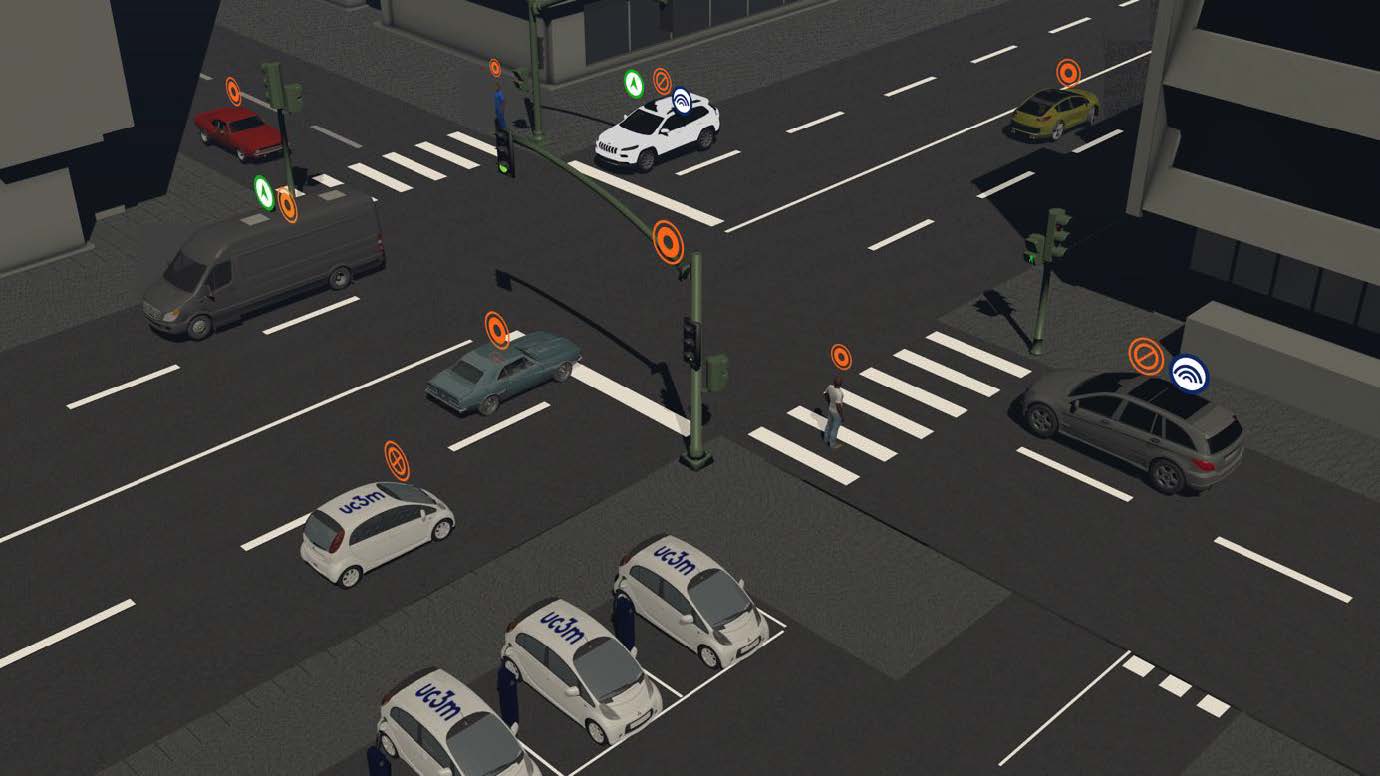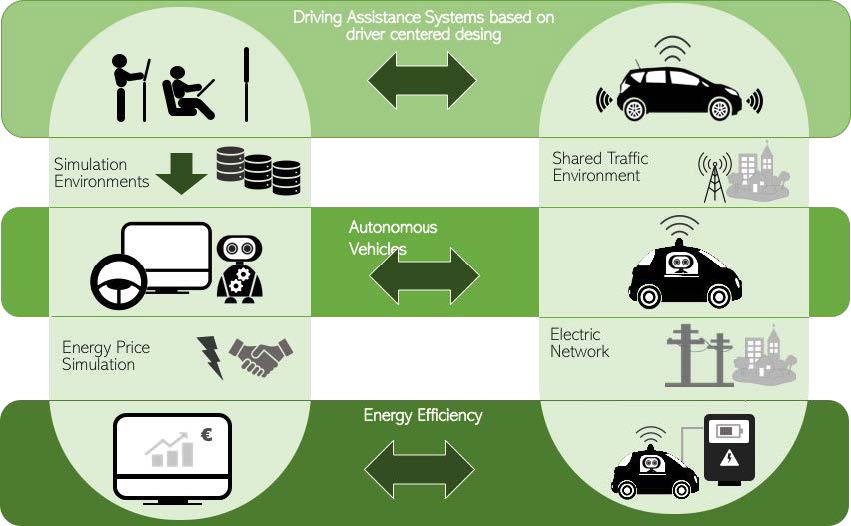i-Urbe
Integration of electric autonomous vehicles in urban environments
Project RTI2018-096036-B-C21, funded by: FEDER/Ministerio de Ciencia e Innovación–Agencia Estatal de Investigación
Proyectos de I+D Retos Investigación 2019-21

The date of the fully implementation of autonomous vehicles (AV) within our daily life is uncertain. Some studies suggest the near decade of 2020 but other put the date even 30 years later. But, what is certain is that autonomous vehicles are going to be a reality and they are going to share infrastructures with highly automated human driven vehicles (HDV). Two highly possibilities are that AV are going to be electric and shared with other users. This project faces some of the challenges the previous facts presents:
- The need of better perception systems for both types of vehicles
- The need for AV to recognized and learn how a concrete HDV behaves in order to share the road, and (c) how to organize and plan the recharging of the AV depending of the state of the electric network and the planned trajectory of the AV.

The current state of the art shows perception is a key aspect for the AV deployment; no sensor is able to perceive every object under every circumstance and sensor fusion and deep learning is the way to face these limitations. That is why one of the objectives of the project is the development of new deep learning architectures for sensor fusion (vision, infrared, lidar, radar) in order to detect objects during the day and night and on sunny, rainy and snowing days. The perception module will be tailor for AV and for HDV, where human factors will be considered.
A second objective is facing the cohabitation problems that surge from the fact AV and DHV are going to share the same infrastructure. A common situation is that an AV is trying to merge into a highway and due to the fact that there are many DHV and none of them is really complying with driving regulations, the AV in not able to find the needed gap to enter into the lane. Similar problems rise with roundabouts, or the way some people change lanes in urban streets. That is why AV has to recognize how a HDV is acting and react accordingly, so this project deals with decision making in complex environments where unpredictable movements can appear suddenly from HDV.
The third objective is related with recharging the batteries of the AV. If the AV is going to be shared by several users 24/7, it has to include this task within the planning of its trajectories in order to minimize idle periods within the constraints of the location of the charging station and the state of the electrical network.
All three objectives will be test using simulators as well as under real traffic conditions..
